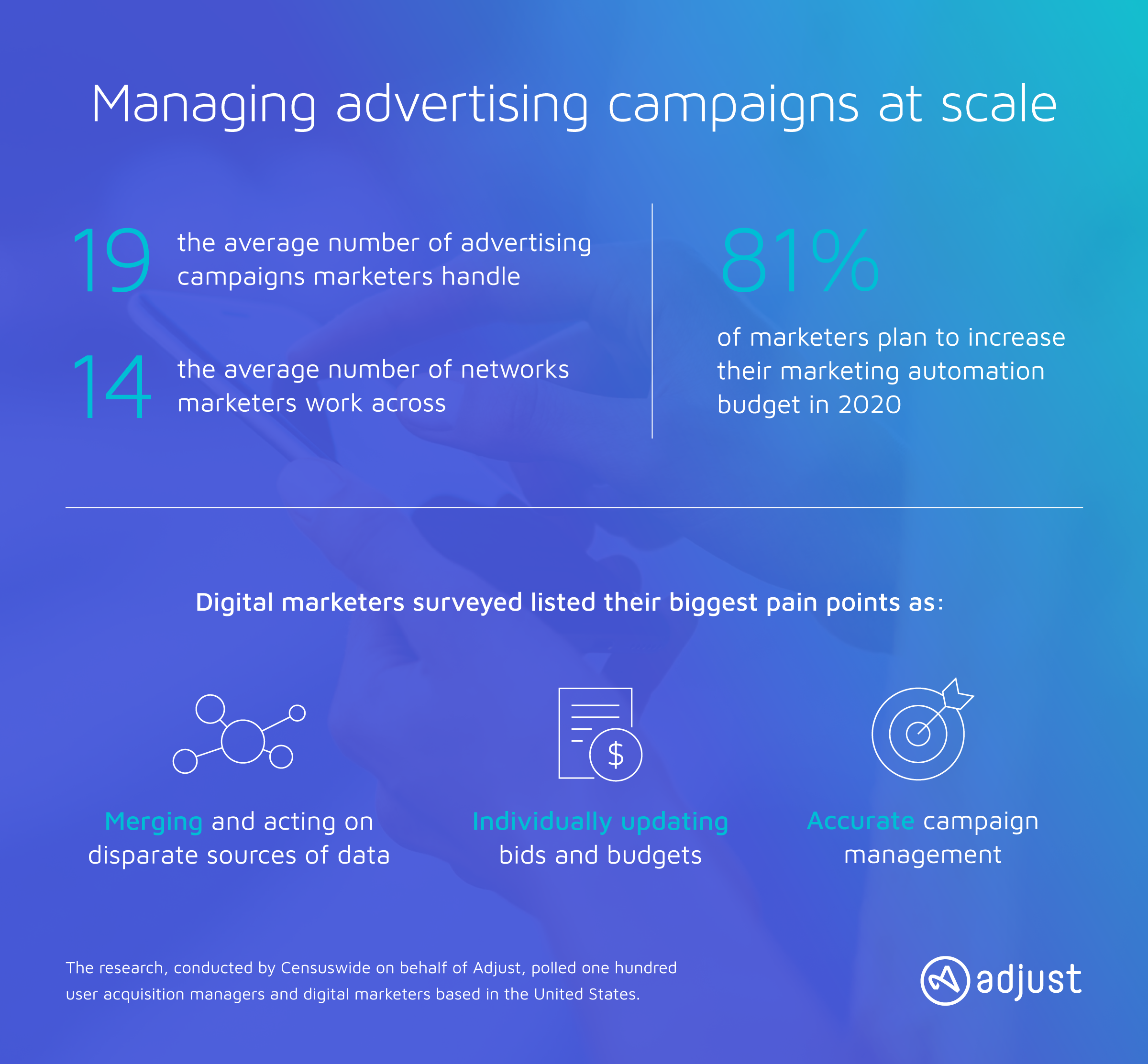How automation can liberate digital marketing
- Wednesday, April 8th, 2020
- Share this article:
Paul H. Müller, co-founder and CTO at Adjust, explains the benefits of marketing automation in freeing marketers up from mundane tasks to concentrate on the things where they can really make a difference.
 Marketing has never been so complex – from the mountains of data marketers must sift through and the number of campaigns they run, to the multitude of advertising partners they work with. To put some numbers on it all, research conducted by Adjust found that the average marketer runs an average of 19 campaigns with 14 different networks. That means that every day, a marketer must handle a minimum of around 260 distinct bids and spend limits.
Marketing has never been so complex – from the mountains of data marketers must sift through and the number of campaigns they run, to the multitude of advertising partners they work with. To put some numbers on it all, research conducted by Adjust found that the average marketer runs an average of 19 campaigns with 14 different networks. That means that every day, a marketer must handle a minimum of around 260 distinct bids and spend limits.
With all these platforms and partners, it’s no surprise that, according to a report from CrowdFlower, 80 per cent of the average marketer’s day is spent on data management. Adjust’s research also mapped marketers’ biggest pain points, discovering that the daily slog of campaign management was where marketers felt the highest burden. Mundane actions, such as merging disparate sources of data, individually updating bids and budgets, and keeping campaign data accurate, were all cited as the most critical.
If the average day of an app marketer is spent on tedious data management tasks, think about what could happen when they are taken off the table. Automation promises to change how we work forever and empower marketers to focus more on strategy and creativity.
The current status quo
In the mobile space, automation helps marketers spend more time on the tasks that matter by using software and machine learning to take the heavy lifting out of data analysis. Mobile marketing is a sophisticated and complex topic, but the reality is that it also involves a lot of heavily manual and time-consuming tasks – from sifting through Excel spreadsheets to manually entering data.
While automation often conjures up lost jobs and robot overlords, at Adjust, we believe our automation tools support marketers to unlock their creativity and provide more space for them to focus on what counts most: strategy.
Marketing automation kills complexity
The promise of automation to liberate us from the nitty-gritty tasks that people don’t want to do is what we are after. This makes sense when you consider that machines are good at dealing with a certain part of these options (simple, frequent decisions), while humans are better at other types of decisions – for example, how to position a brand, or which products to develop.
 For brands looking to reap the benefits of automation, a great starting point is to use it to start quickly iterating on campaigns and creatives, and to adjust bids in real-time. Let’s concentrate on the creatives-side first. Ad creatives age quickly, and to work to their full potential, they need to constantly be iterated on. With automation, marketers can upload hundreds of creatives with a script, as opposed to uploading them one by one. They can also look at which creatives are performing well, create similar concepts to the winning ones, and upload again. By testing so many creatives at a much faster rate, marketers have access to data that helps them create new winning creative concepts and put them out to the market faster than ever before.
For brands looking to reap the benefits of automation, a great starting point is to use it to start quickly iterating on campaigns and creatives, and to adjust bids in real-time. Let’s concentrate on the creatives-side first. Ad creatives age quickly, and to work to their full potential, they need to constantly be iterated on. With automation, marketers can upload hundreds of creatives with a script, as opposed to uploading them one by one. They can also look at which creatives are performing well, create similar concepts to the winning ones, and upload again. By testing so many creatives at a much faster rate, marketers have access to data that helps them create new winning creative concepts and put them out to the market faster than ever before.
Rules can also automate the entire optimization process. Here, “optimization” means adjusting bids based on performance, moving around budgets from underperforming channels to channels that are driving results, and pausing campaigns if necessary. All of this has historically taken a lot of time, as marketers need to navigate between multiple dashboards and look at each line item one-by-one to determine how they will optimize campaigns. With rules, marketers can simply say, if Day 3 retention rate is less than 30 per cent, pause campaign – or, if Day 7 ROAS is more than 40 per cent, increase bid to x amount.
Levelling the playing field
Today, what usually determines success is the sheer size of a team and how much budget a company can throw at acquiring and retaining users. Size is the variable that limits how many segments a marketing department can create and address, or how many campaigns and creatives they can manage. But the advance of marketing automation will change this dynamic forever, and the battle will shift from outspending to outthinking your competition.
For this reason, we at Adjust believe in the need to steer automation’s development, so that humans are freed from boring, menial tasks. From there, we can shift the status quo of work from a focus on digital maintenance to one focused on empowerment. Automation and machine learning can liberate the digital marketer from needless clicks and leave them with more time dedicated toward creative and strategic decisions. Harnessing creativity will not only push the industry forward, but also lead to increased job satisfaction, as marketers concentrate on what is truly important.
















